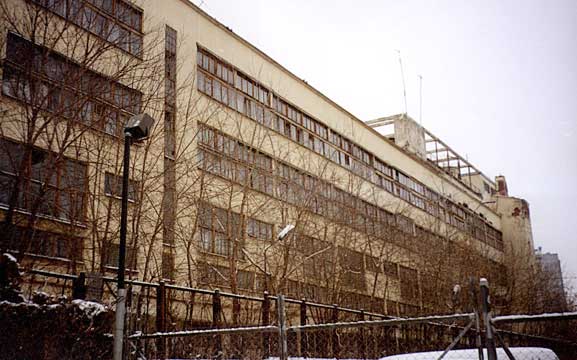“One rouble” restoration project to revive Moscow’s architectural glory

From Saint Basil’s Cathedral to Stalin’s Seven Sisters, Moscow’s architecture is world-renowned. But years of neglect have meant many of the city’s most iconic buildings have fallen into a state of disrepair, among them the Narkomfin Building, a Constructivist-era block of flats. Now the Moscow City Government has announced a major restoration programme for more than 100 of the city’s historic buildings.
Under the scheme, the most wide-reaching and well-financed of the last decade, private investors will be able to rent historic buildings for a rouble per square metre per year as long as they commit to its restoration. It is hoped that around 1.5bn roubles of investment from both public and private funds will pay for the refurbishment of 120 buildings and 400 facades around the capital. Yet despite being ambitious in its scope, the scheme will still leave hundreds of historic buildings in need of repair. According to Moscow Mayor Sergei Sobyanin, the programme will leave a further 350 buildings in urgent need of restoration, 250 of which are in critical condition.
In the past, the Moscow government has implemented restoration programmes in collaboration with the Russian Orthodox Church or private businesses although not always in the most sympathetic of manners — and almost always mired in allegations of corruption. The most prominent example is the Bolshoi Theatre which took eight years and €500m to refurbish. Not only have independent experts placed the actual figure as closer to twice that but those responsible for the overhaul came under fire for using cheap materials and destroying several of the theatre’s unique features.
Although many of the sites in question are already leased to private companies, there have to date been no incentives for tenants to conserve or refurbish buildings. Under the “one rouble” programme, investors will have to commit to providing full-scale restoration within five years. The government expects to put around 50 buildings on the market this year following the success of an auction in December when ten investors bid against each other to rent a 19th-century city estate in south Moscow that once belonged to the merchant MN Gusev.
The decision for the city-wide scheme was made in response to campaigns from local NGOs such as Archnadsor and the Moscow Architecture Preservation Society (MAPS). Speaking to The Calvert Journal, Marina Khrustaleva, board member of MAPS, expressed several reservations about the scheme. She said that interested parties might be deterred by one of the conditions of the programme, which stipulates that investors must be prepared to pay full market price for restoration and show availability of funds for the undertaking. She added that the maximum lease term of 49 years might also not be a long enough period to justify investment.
To offset the potential lack of interest and private investment, Khrustaleva said that the bulk of restoration would most likely still be financed from the city or state budget. “This is a major project for Moscow and is a cause of both hope and concern,” she said. “Experts and locals were rather embarrassed last year by the new colour of some historic facades after a number of restorations. It would help if we could see plans for changes such as new painting schemes and have the chance to discuss them beforehand.”
One example is the so-called Pompeii House block of apartments in central Moscow, which dates back to the Thirties. Thanks to a fast-track renovation, the building’s once umber facade and crimson balconies are now yellow and salmon. Mindful of concerns of this kind, Moscow City Government has insisted it will launch public consultations for each restoration to ensure both consensus and quality.